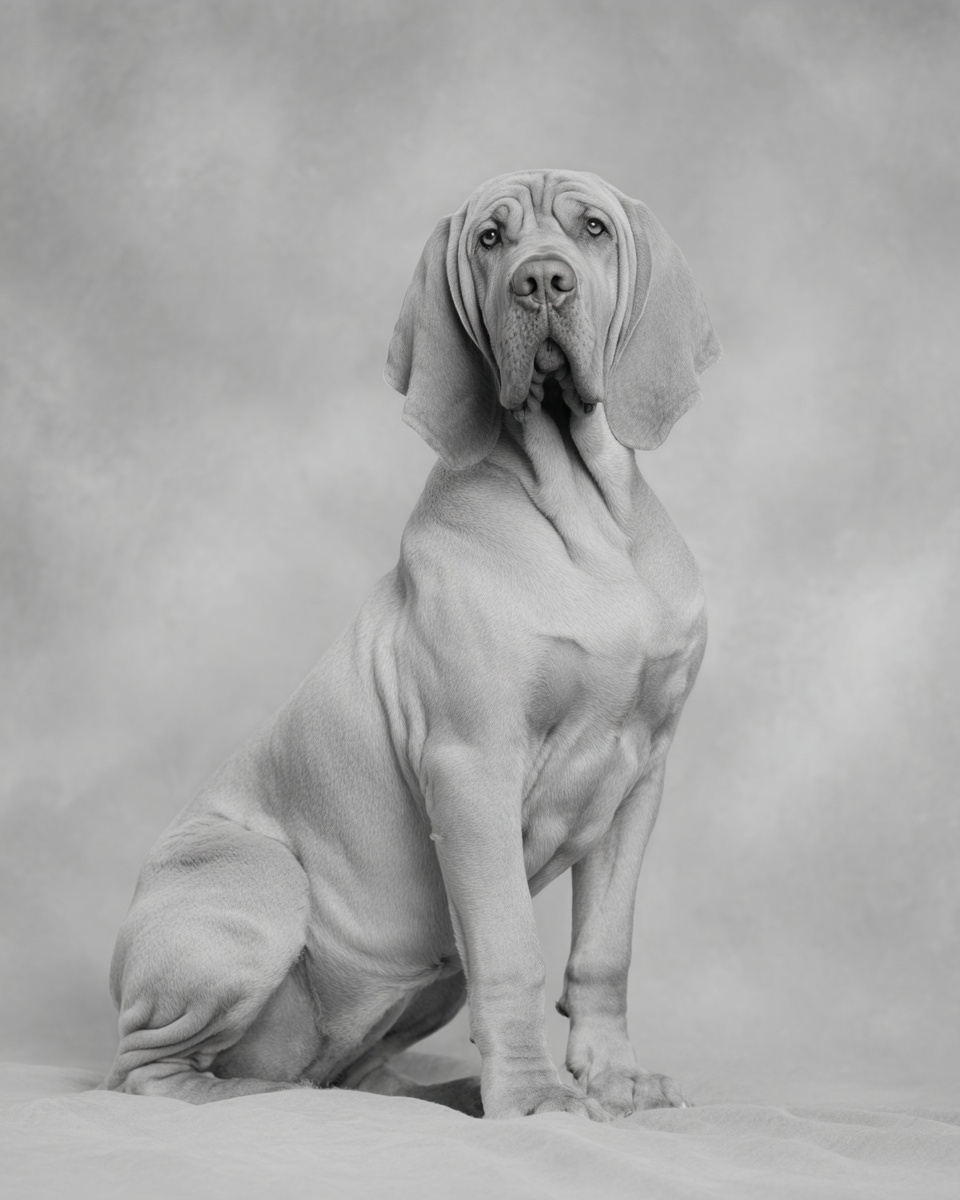Bloodhound

Description
Bloodhounds are one of the oldest scent-tracking breeds, tracing back to medieval European monasteries. Their large, droopy ears and loose skin aren’t just for show—they help trap scent particles, making them exceptional trackers. These dogs typically weigh between 80 and 110 pounds, with a solid coat in black & tan, liver & tan, or red. Their short, smooth coat requires minimal upkeep but highlights their muscular frame. Known for their gentle and patient nature, Bloodhounds bond deeply with families and kids. They’re calm around the house but become relentless once they catch a scent, often following it for miles. Their booming bark and drooling are part of their charm, though their stubborn streak means training demands patience and consistency.
Grooming
Bloodhounds have a short, smooth coat that sheds lightly to moderately throughout the year. Weekly brushing with a rubber curry or bristle brush keeps their coat healthy and removes loose hair without irritating their sensitive skin. Bathing every 4 to 8 weeks is enough; over-bathing can dry out their skin and strip natural oils. Their nails should be trimmed every 2 to 4 weeks to prevent cracking, and ears need monthly cleaning to avoid infections, especially given their floppy shape. - Brush weekly with rubber curry or bristle brush - Bathe every 4–8 weeks, no more - Trim nails every 2–4 weeks - Clean ears monthly to prevent buildup - Spot tidy as needed, especially around eyes and mouth Pro tip: Use a gentle ear cleaner designed for floppy ears to keep infections at bay, since Bloodhounds are prone to ear issues due to their heavy ear flaps.
Learn the Smooth routine:
→ Complete Smooth Grooming Guide
Walking
Bloodhounds need about 60 minutes of walking daily, ideally in one solid session to satisfy their scent-driven curiosity. Their tracking instincts mean they’ll want to follow every interesting smell, so a secure leash and collar are essential. Walks should include time for sniffing and exploring, which mentally stimulates them as much as physical exercise. Example routine: - 10 minutes warm-up with leash walking - 40 minutes slow-paced scent exploration - 10 minutes cool-down and socialization This routine helps manage their natural drive while preventing boredom. Keep in mind, Bloodhounds can be vocal on walks, so training to manage barking is helpful.
Boarding
When boarding a Bloodhound, provide a crate at least 48 inches long to accommodate their large frame comfortably. They enjoy calm decompression after exercise, so daily walks or play sessions are essential to keep them relaxed. Avoid small-animal toys; their strong prey drive and scent focus mean they might try to chase or chew inappropriate items. Secure fencing is a must, as Bloodhounds are natural escape artists when they catch a scent. Staff should be aware of their gentle temperament but also their stubbornness, requiring patient handling and consistent routines. Enrichment like scent games or puzzle feeders can keep them mentally engaged during their stay, reducing stress and promoting well-being.